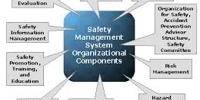The goal of water security is to maximize the benefits of water to humans and ecosystems. Its goal is to ensure that everyone has access to safe, dependable, and sufficient water resources for their basic needs and well-being. The second goal is to keep the risks of water’s destructive effects to an acceptable level. Water security refers to a set of interconnected goals and principles that address issues such as water availability, accessibility, quality, and sustainability. These risks include, for example, having too much water (flooding), not having enough water (drought and water scarcity), or having poor quality (polluted) water.
People who live in areas where water security is high always have access to “an acceptable quantity and quality of water for health, livelihoods, and production.” Access to WASH services (water, sanitation, and hygiene, for example) is one component of water security. Some organizations limit the term “water security” to water supply issues only.
The key objectives of water security include:
- Access to Clean and Safe Water: Water security’s primary goal is to ensure that everyone has access to a reliable and sustainable supply of clean and safe drinking water. This entails providing sufficient amounts of water that meet quality standards in order to prevent waterborne diseases and promote public health.
- Sustainable Water Management: Water security is also concerned with the management of water resources in a sustainable and equitable manner in order to meet the needs of current and future generations. This includes water conservation, water scarcity management, and water pollution reduction in order to maintain ecosystem health and water availability.
- Resilience to Water-Related Challenges: Water security aims to enhance resilience against various water-related challenges such as droughts, floods, and climate change impacts. By implementing effective water management strategies and infrastructure, communities can better cope with and recover from these challenges.
- Equity and Social Justice: Achieving water security involves ensuring equitable distribution of water resources among various sectors and communities. Vulnerable populations should not be disproportionately affected by water scarcity or pollution.
- Integrated Water Resource Management: Water security emphasizes the importance of managing water resources holistically, considering both surface and groundwater sources, and integrating various sectors such as agriculture, industry, and environment. Integrated water resource management promotes coordination among different stakeholders to optimize water use.
Water security outcomes that address economic, environmental, and social equity concerns are sought by policymakers and water managers. These outcomes may include increased economic well-being, improved social equity, and reduced water-related risks. Interactions and trade-offs exist between the various outcomes. When developing climate change adaptation strategies, planners frequently consider the outcomes of water security for various groups in society.
In essence, water security seeks to strike a balance between human needs and aquatic ecosystem health, ensuring a sustainable and reliable water supply for all while protecting the environment for future generations. To address the complex challenges associated with water resources, governments, communities, industries, and other stakeholders must work together.















